Start your own food delivery platform like Zomato with our ready-made Zomato Clone App.
Easily connect restaurants, delivery partners, and customers in one smart app.
✅ User-friendly design
✅ Fast and secure orders
✅ 100% customizable for your brand
Make your food delivery dream a reality today! 🌟
Get a Free Demo
Mail id : sales @abservetech .com
Phone number: + 91 9222479222
#ZomatoClone #fooddeliveryapp #OnDemandApp #AppDevelopment #startup #Abservetech #usa #uk #india #australia #inland #india #greenland #Delivery #business #zomoto #southamerica #Canada #spain #russia #madurai #AppDevelopment #cloneapp #clone script #dubai #egypt #mexico #japan
https://www.webdevelopment...
#StudyInAustralia #StudyAbroadInAustralia #AustralianUniversities #TopUniversitiesInAustralia #StudyInAustraliaForInternationalStudents #AustraliaStudyGuide #EducationInAustralia #StudyVisaAustralia #AustralianStudentVisa #CostOfStudyingInAustralia #ScholarshipsInAustralia #BestCoursesInAustralia #WhyStudyInAustralia #LivingInAustraliaForStudents #StudyInAustraliaRequirements #StudyInAustraliaForIndianStudents #HigherEducationInAustralia #AustralianEducationSystem #AffordableUniversitiesInAustralia #StudyingAbroadInAustralia

Study in Australia: A Comprehensive Guide for Indian Student
Explore detail guide on Study in Australia for Indian Students. Reach out to SIEC for applications to study at top universities in Australia and apply for Visa.
https://www.siecindia.com/blogs/your-guide-to-study-in-australia#TopUniversitiesInUSAForMasters #BestUniversitiesInUSAForMasters #TopUSCollegesForMasters #BestUSUniversitiesForMasters #TopGraduateSchoolsInUSA #BestMastersProgramsInUSA #TopMSUniversitiesInUSA #BestUniversitiesInUSAForMS #TopCollegesInUSAForMasters #BestGraduateUniversitiesInUSA #TopUniversitiesInUSAForInternationalStudents #BestUSCollegesForMasters #TopRankedUniversitiesInUSAForMasters #BestMastersCollegesInUSA #TopUSAUniversitiesForPostgraduateStudies

Top universities for Masters in the USA
Discover the top universities for Masters in the USA. Explore programs, rankings, and opportunities to boost your academic and career growth.
https://www.siecindia.com/blogs/top-universities-in-usa-for-ms-universities-courses-ranking-salary-after-ms#studyabroadconsultants #OverseasEducationConsultants #beststudyabroadconsultants #AbroadEducationConsultants #ForeignEducationConsultants #InternationalEducationConsultants #StudentVisaConsultants #HigherEducationAbroadConsultants #topstudyabroadconsultants #OverseasStudyAdvisors #EducationAbroadConsultants #GlobalEducationConsultants #ProfessionalStudyAbroadConsultants #TrustedStudyAbroadConsultants #StudyAbroadCounseling

Study Abroad Consultants | Overseas Education Consultants
Explore SIEC - best study abroad consultants offering expert guidance, top universities, visa support, and career advice to make your global dream a reality.
https://www.siecindia.com/Upgrade your gym with premium dumbbells at wholesale prices from Nustep Fitness India. Perfect for gyms, fitness studios, and personal trainers, our bulk deals help you save big while getting top-quality equipment. Order now and stock up on durable, high-performance dumbbells for sale for every workout at wholesale prices.
Order now at www.nustepfitnessindia.com
#WholesaleDumbbells , #GymEquipmentDeals , #BulkFitnessEquipment , #NustepFitnessIndia , #GymSetupIndia
#H1BVisaFees #RisingH1BCosts #FutureOfH1BVisa #H1BVisaImpact #H1BFeeHike2025 #USWorkVisaCosts #ImpactOfH1BFeeIncrease #ImmigrationPolicyUSA #H1BVisaChallenges #FutureOfSkilledWorkersUSA #H1BVisaChanges #H1BVisaReform #CostOfH1BSponsorship #H1BFeeImpactOnEmployers #H1BFeeImpactOnStudents #USVisaPolicyChanges #H1BVisaForInternationalWorkers #H1BFeeRiseEffects #H1BVisaCostBurden #H1BSponsorshipChallenges

The Future Impact of Rising H-1B Visa Fees
Discover how rising H-1B visa fees could impact international talent, U.S. businesses, and future immigration trends.
https://www.siecindia.com/blogs/the-future-impact-of-rising-h1b-visa-feesRilei Pack LLP is a leading BOPP Bags Manufacturer India, offering stylish, sustainable, and cost-effective packaging solutions. Perfect for FMCG, food, garments, and retail industries, our high-quality BOPP bags ensure durability, moisture resistance, and custom printing options. Choose eco-friendly packaging that protects products while enhancing your brand image.
Order Now: Visit www.rileipack.com to request a quote or bulk order!
#BOPPBags , #PackagingIndia , #EcoFriendlyPackaging , #SustainablePackaging , #CustomPrintedBags , #BOPP , #Boppbagsmanufacturer ,
#MastersInUSA #MastersInUSAForInternationalStudents #StudyMastersInUSA #MSinUSA #BestUniversitiesForMastersInUSA #TopCollegesForMastersInUSA #MSInUSARequirements #MastersInUSACost #ScholarshipsForMastersInUSA #AffordableMastersInUSA #MastersInComputerScienceUSA #MBAinUSA #OneYearMastersInUSA #STEMMastersInUSA #AdmissionProcessForMastersInUSA #MastersInUSAWithoutGRE #TopRankedUniversitiesForMastersInUSA #PostgraduateCoursesInUSA #ApplyForMastersInUSA #MSInUSAFees

Masters in USA – Top Universities & Programs
Pursue your masters in the USA with top universities, diverse programs, global exposure, and career opportunities. Start your masters in USA journey today!
https://www.siecindia.com/blogs/masters-in-the-usa#BestUniversitiesForEconomicsInUSA #TopEconomicsUniversitiesInUSA #BestCollegesForEconomicsInUSA #TopRankedEconomicsProgramsUSA #LeadingEconomicsSchoolsInUSA #USUniversitiesForEconomics #BestUndergraduateEconomicsProgramsUSA #TopGraduateEconomicsProgramsUSA #IvyLeagueEconomicsUniversitiesUSA #BestEconomicsCollegesInAmerica #TopUSUniversitiesForEconomicsMajors #TopEconomicsPhDProgramsUSA #BestSchoolsForEconomicsStudiesUSA #USCollegesWithStrongEconomicsPrograms #BestUniversitiesToStudyEconomicsInUSA
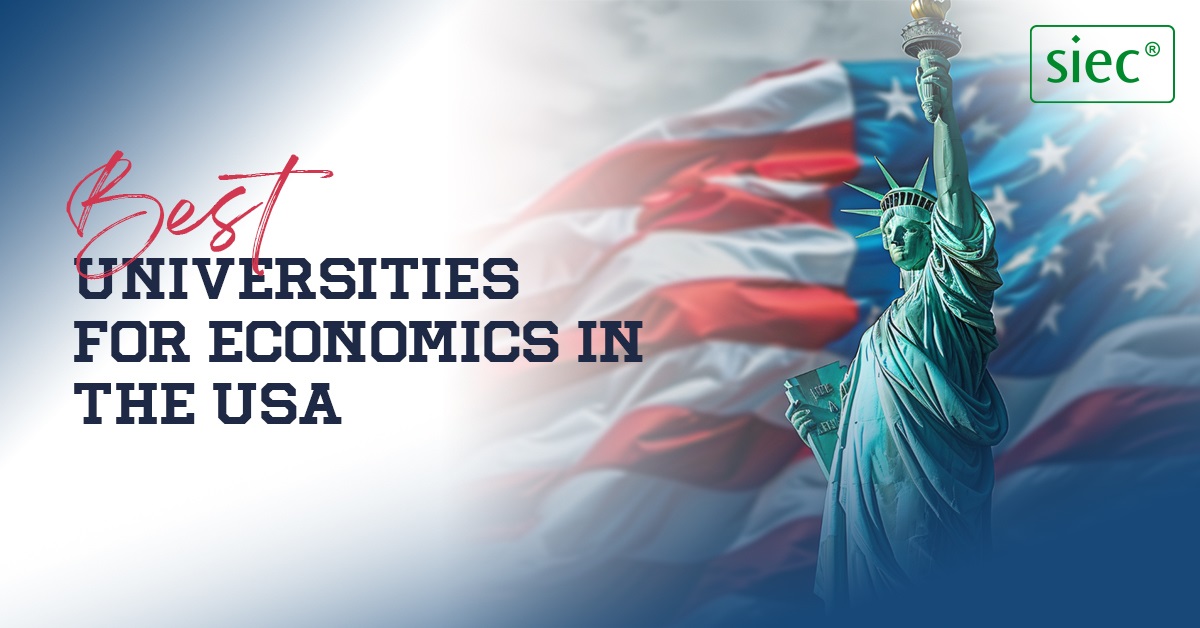
Best Universities for Economics in the USA
Are you planning for studying abroad? Have a look at the Best Universities for Economics in the USA, check your eligibility with USA Experts. Book FREE Counselling.
https://www.siecindia.com/blogs/best-universities-for-economics-in-usa#OpportunitiesForIndiansInFinland #JobsInFinlandForIndians #WorkOpportunitiesInFinland #StudyOpportunitiesInFinland #FinlandImmigrationForIndians #CareerOpportunitiesInFinland #FinlandJobMarketForIndians #IndianStudentsInFinland #HigherEducationInFinland #ScholarshipsInFinland #IndianProfessionalsInFinland #ITJobsInFinland #HealthcareJobsInFinland #FinlandWorkVisaForIndians #IndianCommunityInFinland #FinlandJobVacancies #FinlandPermanentResidency #SkilledWorkersInFinland #IndianGraduatesInFinland #LivingInFinlandAsAnIndian
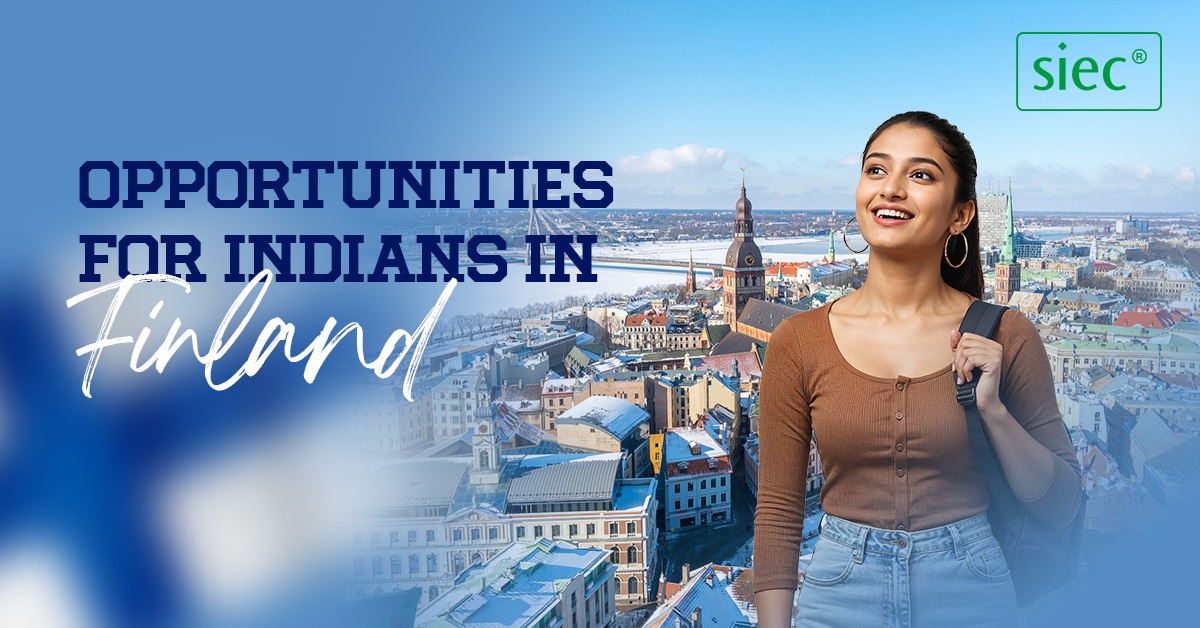
Opportunities for Indians in Finland
Explore opportunities for Indians in Finland, from jobs and education to business and lifestyle prospects in this thriving Nordic nation.
https://www.siecindia.com/blogs/opportunities-for-indians-in-finland#scholarshipstostudyabroad #StudyAbroadScholarships #InternationalScholarships #ScholarshipsForIndianStudentsAbroad #fullyfundedscholarshipsabroad #undergraduatescholarshipsabroad #postgraduatescholarshipsabroad #scholarshipsformastersabroad #PhDScholarshipsAbroad #governmentscholarshipstostudyabroad #ScholarshipsForInternationalStudents #BestScholarshipsToStudyAbroad #scholarshipsforoverseaseducation #FreeScholarshipsToStudyAbroad #scholarshipsforstudyingoverseas #meritbasedscholarshipsabroad #scholarshipsabroad #scholarshipstostudyoverseas
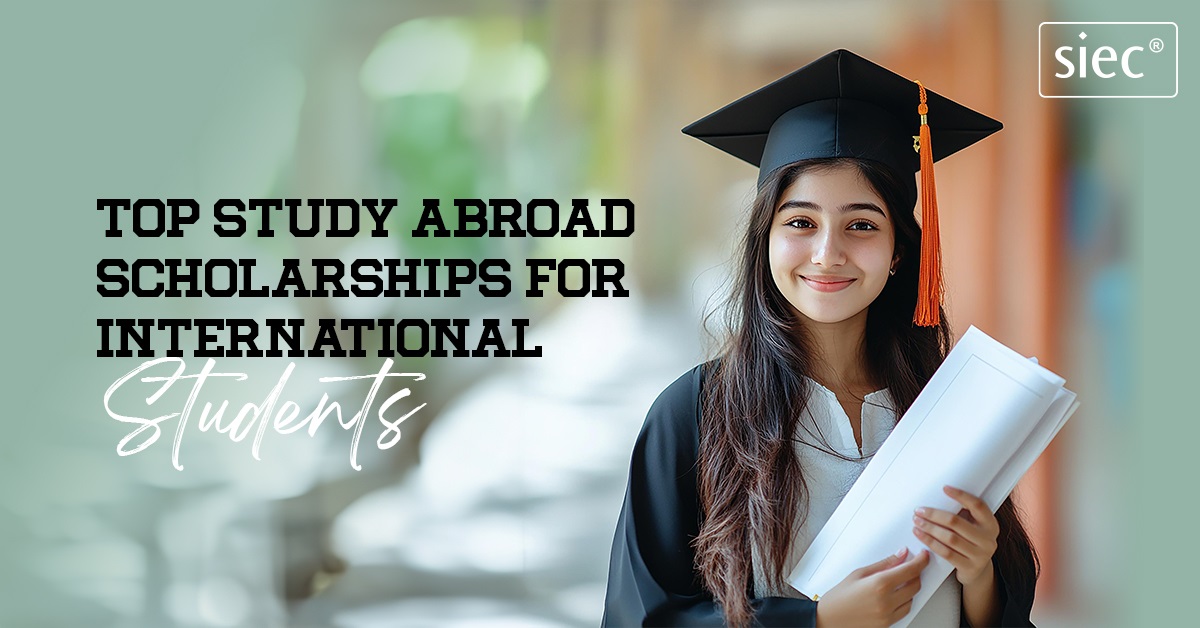
Top Study Abroad Scholarships for International Students
Discover top study abroad scholarships for international students. Explore funding options to make your global education dream affordable and achievable.
https://www.siecindia.com/blogs/top-study-abroad-scholarships-for-indian-students#MastersInTheUK #StudyMastersInTheUK #MastersDegreeInTheUK #PostgraduateCoursesInTheUK #UKUniversitiesForMasters #BestUniversitiesInTheUKForMasters #MastersInTheUKForInternationalStudents #OneYearMastersInTheUK #CostOfMastersInTheUK #MastersInTheUKRequirements #ApplyForMastersInTheUK #MastersProgramsInTheUK #TopMastersCoursesInTheUK #AffordableMastersInTheUK #MastersScholarshipsInTheUK #MBAInTheUK #MSInTheUK #MastersAdmissionInTheUK #UKMastersApplicationProcess #MastersInLondonUK

Masters in the UK | Study in the UK for International Students
Study Masters in the UK. Explore top UK universities for masters, masters’ tuition fees, master’s scholarships in the UK, top master’s specialisation in the UK.
https://www.siecindia.com/blogs/masters-in-the-uk#NursingCoursesInCanadaForIndianStudents #NursingCollegesInCanadaForIndianStudents #BScNursingInCanadaForIndianStudents #NursingDiplomaCoursesInCanadaForIndianStudents #PostgraduateNursingCoursesInCanadaForIndianStudents #NursingProgramsInCanadaForIndianStudents #StudyNursingInCanadaForIndianStudents #NursingUniversitiesInCanadaForIndianStudents #BScNursingFeesInCanadaForIndianStudents #RequirementsForNursingInCanadaForIndianStudents #NursingCollegesInCanadaWithFeesForIndianStudents #AffordableNursingCoursesInCanadaForIndianStudents #TopNursing

Nursing Courses in Canada for Indian Students
Explore nursing courses in Canada after 12th for Indian students. Learn about top universities, BSc Nursing, diploma & master’s programs, fees, and eligibility
https://www.siecindia.com/blogs/nursing-courses-in-canada-for-indian-studentsDiscover the real cost of fitness app development in India. From basic workout trackers to advanced AI-powered fitness apps, explore pricing, features, and factors affecting development costs. Get expert insights to plan your fitness app budget in 2025.
for more: https://duplextech.com/blo...
#StudyInUSA #HowToStudyInUSA #StudyInUSAForIndianStudents #USAStudyGuide #StudyAbroadUSA #USAStudentVisaProcess #UniversitiesInUSA #TopCollegesInUSA #CostOfStudyingInUSA #ScholarshipsToStudyInUSA #AdmissionProcessUSAUniversities #USAEducationSystem #BestCoursesToStudyInUSA #RequirementsToStudyInUSA #StudyAbroadConsultantsForUSA #USAApplicationProcessForInternationalStudents #WorkWhileStudyingInUSA #USAStudyVisaRequirements #AffordableUniversitiesInUSA #BenefitsOfStudyingInUSA

Study in the USA: Steps to Apply to Universities in the USA
Get expert guidance on how to study in the USA. Learn about admission process to study in USA and steps to study in the USA. Contact SIEC for a FREE counselling
https://www.siecindia.com/blogs/how-to-study-in-usa#StudyAbroad #StudyAbroadPrograms #StudyAbroadScholarships #BestCountriesToStudyAbroad #studyabroadconsultants #StudyAbroadForIndianStudents #StudyAbroadOpportunities #overseaseducation #InternationalEducation #StudyAbroadUniversities #StudyAbroadAdmission #StudyAbroadLoans #TopStudyAbroadDestinations #StudyAbroadAgencies #StudyAbroadRequirements #StudyAbroadCourses #StudyAbroadExams #StudyAbroadGuidance #StudyAbroadProcess #StudyAbroadVisa

Study Abroad: Top Countries, Universities & Colleges & More
Want to Study Abroad? Get Free counselling session on top study programs, universities, intakes, scholarships, visa, and application process. Register Now!
https://www.siecindia.com/study-abroad.php#StudyAbroadScholarships #ScholarshipsForStudyingAbroad #InternationalScholarships #OverseasEducationScholarships #GlobalScholarshipsForStudents #ScholarshipsForIndianStudentsAbroad #UndergraduateStudyAbroadScholarships #PostgraduateStudyAbroadScholarships #FullyFundedStudyAbroadScholarships #GovernmentScholarshipsForStudyingAbroad #PrivateScholarshipsForStudyingAbroad #BestScholarshipsToStudyAbroad #ScholarshipsForInternationalStudents #FreeScholarshipsToStudyAbroad #MBAScholarshipsAbroad #PhDScholarshipsAbroad #ScholarshipsForForeignEducation #MeritBasedStudyAbroadScholarships #NeedBasedStudyAbroadScholarships #TopStudyAbroadScholarships
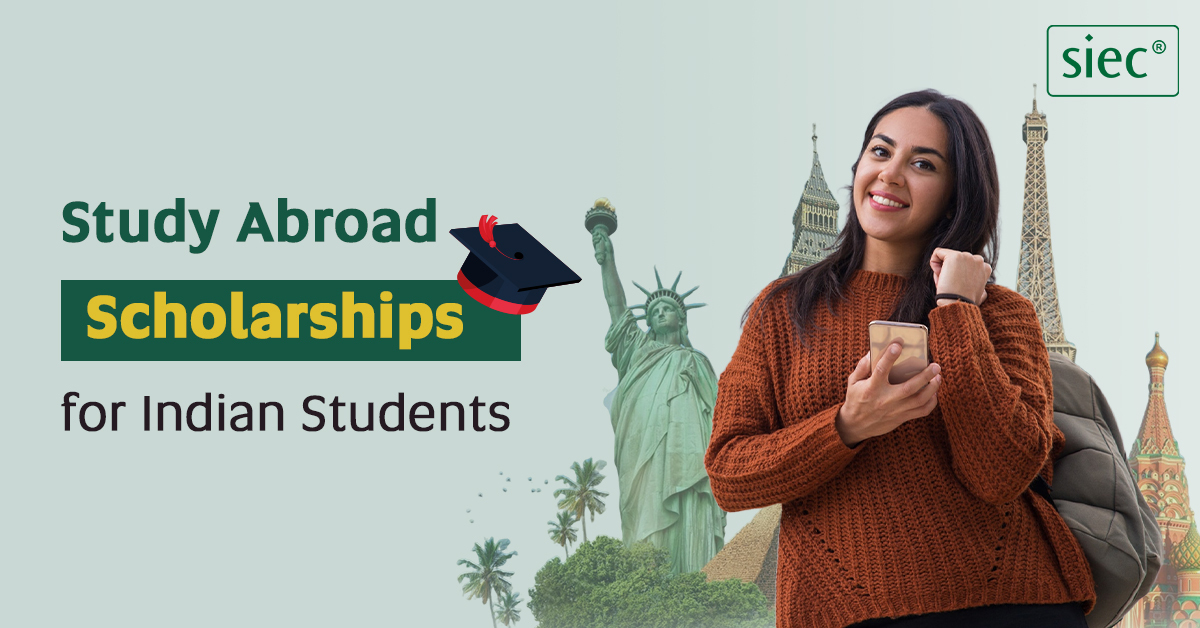
Study Abroad Scholarships for Indian Students
Explore Top Study Abroad Scholarships for Indian Students. Apply to scholarships in USA, Australia, UK, Europe and many more. Contact SIEC for more details.
https://www.siecindia.com/blogs/study-abroad-scholarships-for-indian-students#topstudyabroadconsultants #beststudyabroadconsultants #leadingstudyabroadconsultants #TopOverseasEducationConsultants #BestOverseasEducationConsultants #StudyAbroadConsultancyServices #TrustedStudyAbroadConsultants #TopEducationConsultantsForAbroad #BestConsultantsForStudyingAbroad #OverseasStudyConsultants #TopInternationalEducationConsultants #GlobalStudyAbroadConsultants #BestConsultancyForForeignEducation #TopConsultantsForAbroadStudies #ReliableStudyAbroadConsultants #BestStudyAbroadAdvisors #EducationAbroadConsultancy #TopEducationConsultantDelhi

Top Study Abroad Consultants in Delhi | Expert Guidance for Global Education
Discover SIEC the top study abroad consultants in Delhi offering expert guidance, visa support, and university admissions for your global education journey.
https://www.siecindia.com/blogs/top-study-abroad-consultants-in-delhi#GeopoliticsAndStudyAbroad #ImpactOfGeopoliticsOnEducation #GeopoliticsAndInternationalStudents #StudyingAbroadAndGlobalPolitics #HowGeopoliticsAffectsStudyAbroad #BenefitsOfGeopoliticsForStudents #GeopoliticalAwarenessForInternationalStudents #GeopoliticsInHigherEducation #InternationalRelationsAndStudyAbroad #GlobalPoliticsAndStudentMobility #ImportanceOfGeopoliticsInStudyAbroad #GeopoliticalChallengesForStudentsAbroad #GeopoliticsAndCulturalExchange #GeopoliticsAndOverseasEducation #StudyAbroadGlobalPerspective
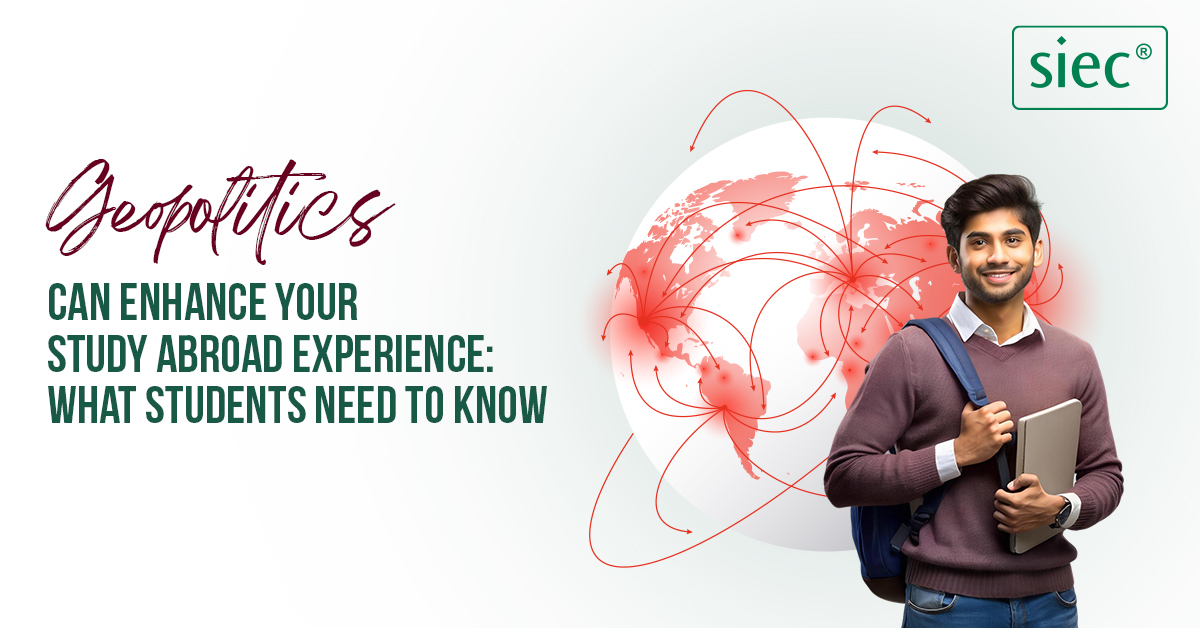
Geopolitics Can Enhance Your Study Abroad Experience: What Students Need to Know
Know How changing geopolitics influences global education and what students can learn to enhance their study abroad experience. Contact SIEC for guidance.
https://www.siecindia.com/blogs/geopolitics-can-enhance-your-study-abroad-experience#TipsToChooseUniversityAbroad #BestUniversityForInternationalStudents #ChooseRightCourseAbroad #StudyAbroadCourseSelection #FactorsToChooseUniversityAbroad #SelectingBestUniversityOverseas #ChoosingRightProgramAbroad #StudyAbroadTipsForStudents #BestCoursesToStudyAbroad #PickUniversityAbroad #StudyAbroadDecisionGuide #ChoosingCoursesAbroad #UniversitySelectionTips #FindBestUniversityAbroad #RightCareerPathAbroad #OverseasEducationGuide #ChoosingDegreeProgramAbroad #TopTipsForStudyingAbroad #UniversityAndCourseSelection

Tips to Choose the Best University and Right Courses to Study Abroad
Discover 10 Tips to Choose the Best University and Right Courses to Study Abroad. Contact SIEC for FREE guidance on finding the right university and best course.
https://www.siecindia.com/blogs/tips-to-choose-the-best-university-and-right-courses-to-study-abroadhttps://earthstona.com/pro...
At EarthStona, we bring walls to life with our exquisite Natural Stone Wall Carvings—a perfect blend of art, tradition, and craftsmanship. Handcrafted by skilled artisans, each piece is carved from premium natural stones like sandstone, marble, and limestone, ensuring durability and timeless beauty.
Our wall carvings feature a wide range of styles, from traditional Indian motifs and mythological scenes to floral patterns and modern designs. These carvings add depth, elegance, and a unique identity to any space—be it a pooja room, entrance wall, living area, or outdoor façade.
Natural stone carvings are more than decoration—they’re expressions of heritage and spiritual energy. With EarthStona, you get custom designs, expert detailing, and high-quality finishes that elevate your interiors and exteriors alike.
Discover the timeless charm of stone wall carving with EarthStona—where tradition meets craftsmanship in every detail.

Natural Stone Wall Carving | Upto 10% Off | EarthStona
Discover exquisite natural stone wall carving artistry - transform your space with timeless elegance and unique designs. Explore now!
https://earthstona.com/products/natural-stone-wall-carving#UniversitiesInAdelaide #AdelaideUniversities #TopUniversitiesInAdelaide #BestUniversitiesInAdelaide #UniversitiesInSouthAustralia #StudyInAdelaide #HigherEducationInAdelaide #AdelaideUniversityRanking #SouthAustraliaUniversities #AdelaideCollegesAndUniversities #TopCollegesInAdelaide #UniversityOfAdelaide #FlindersUniversityAdelaide #UniversityOfSouthAustralia #BestCollegesInSouthAustralia #InternationalStudentsInAdelaide #StudyAbroadInAdelaide #AdelaideCampusUniversities #AdelaideHigherEducation #UniversitiesForInternationalStudents
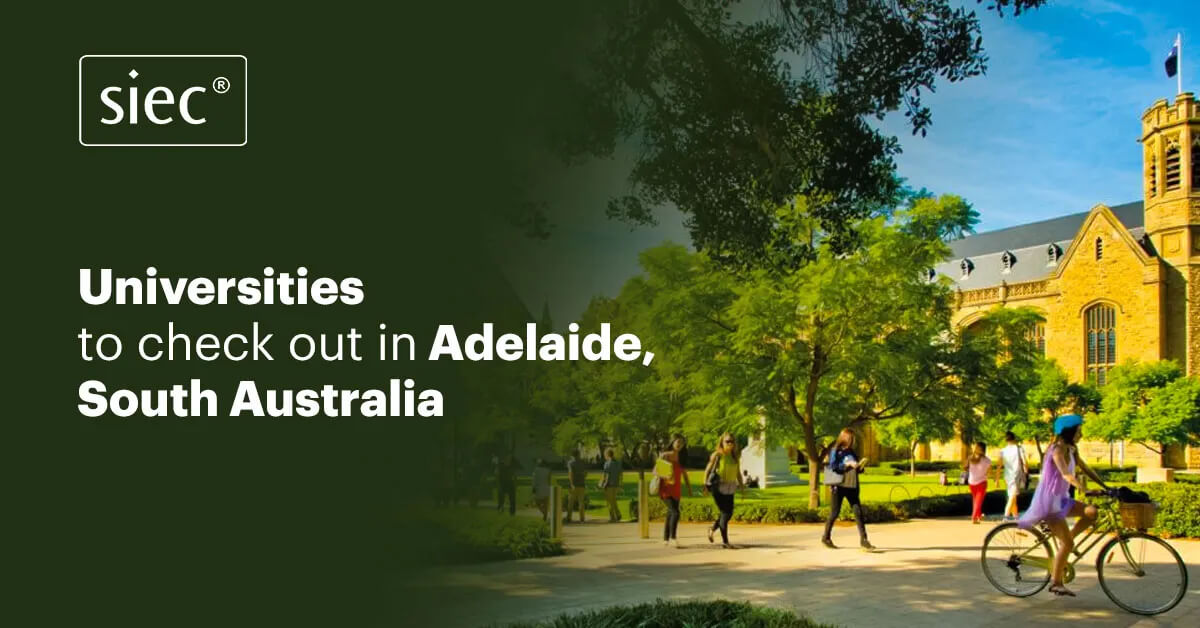
Universities in Adelaide, South Australia | Apply Now
Explore popular Universities in Adelaide, South Australia. Discover study options and student life in Adelaide. Study in Australia with 100% Scholarship. Apply.
https://www.siecindia.com/blogs/universities-to-check-out-in-adelaide-south-australiaWhat roles do global alliances (e.g., NATO, QUAD, ASEAN) play in cyber defense?
Global alliances play increasingly vital and multifaceted roles in cyber defense, recognizing that cyber threats transcend national borders and require collective action.
They provide frameworks for cooperation, information sharing, capacity building, and, in some cases, collective response.
Here's a breakdown of how different alliances contribute:
NATO (North Atlantic Treaty Organization):
NATO is arguably the most advanced military alliance in terms of its cyber defense integration, primarily because its core mission is collective defense.
Collective Defense (Article 5): A cornerstone of NATO's cyber defense strategy is the understanding that a cyberattack could potentially trigger Article 5 (an attack against one Ally is an attack against all). While the threshold for this is intentionally ambiguous and assessed on a case-by-case basis (based on the effects of the attack), it signifies a strong commitment to mutual defense in cyberspace.
Cyberspace as a Domain of Operations: NATO officially recognized cyberspace as a domain of operations (alongside land, sea, and air) in 2016. This allows NATO military commanders to better integrate cyber capabilities into missions and operations.
Information Sharing and Threat Intelligence: NATO facilitates the real-time sharing of information about cyber threats, malware, and best practices among Allies through dedicated platforms and expert networks.
Rapid Reaction Teams (RRTs): NATO maintains cyber rapid reaction teams that can be deployed to help Allies address cyber challenges, providing technical assistance and coordinating responses to incidents.
Capacity Building and Training: NATO works to enhance the individual cyber defenses of its member states through training programs, exercises (like Cyber Coalition), and setting common targets for national cyber defense capabilities.
Norms and International Law: NATO consistently reaffirms that international law, including the UN Charter, applies in cyberspace, contributing to the development of responsible state behavior norms.
Public-Private Partnerships: NATO strengthens its relationship with industry and academia through initiatives like the NATO Industry Cyber Partnership to leverage external expertise and resources.
QUAD (Quadrilateral Security Dialogue - Australia, India, Japan, United States):
The QUAD, while not a military alliance in the traditional sense, has significantly increased its focus on cybersecurity cooperation, particularly given the shared concerns about threats in the Indo-Pacific.
Critical Infrastructure Protection: A key priority for the QUAD is to strengthen the resilience of critical infrastructure across member states and the broader Indo-Pacific region against cyber disruptions. This involves sharing approaches to policy development and threat information.
Supply Chain Risk Management: Collaboration on securing digital supply chains, recognizing that vulnerabilities in one component can impact all users.
Software Security Standards: Efforts to align and ensure the implementation of baseline software security standards, potentially leveraging the collective purchasing power of their governments to drive secure-by-design principles in the software ecosystem.
Information Sharing: Promoting rapid and timely sharing of threat information between governments and with industry partners.
Capacity Building: Collaborating on capacity-building programs in the Indo-Pacific region to help partner nations enhance their cybersecurity capabilities.
Workforce Development: Working together to enhance the collective cybersecurity workforce and pool of talented cyber professionals among member states.
Responsible Cyber Habits: Launching public campaigns like the "Quad Cyber Challenge" to improve cybersecurity awareness and habits among Internet users.
ASEAN (Association of Southeast Asian Nations):
ASEAN's approach to cyber defense is focused on regional cooperation, capacity building, and harmonizing policies among its diverse member states.
Regional Cybersecurity Cooperation Strategy: ASEAN has a strategy (e.g., 2021-2025) focused on advancing cyber readiness, strengthening regional cyber policies, enhancing trust in cyberspace, and capacity building.
ASEAN CERT Network: Facilitating coordination and information sharing between national-level Computer Emergency Response Teams (CERTs) of member states. An ASEAN CERT is being established to enable timely exchange of threat information.
Cybercrime Operations Desk: Collaborating with INTERPOL to promote information sharing on cybercrime threats and better integrated operations for the region.
Capacity Building and Training: Numerous initiatives (often supported by dialogue partners like Singapore, Japan, and the U.S.) to build technical, policy, and strategic cyber capacity among member states through training programs, workshops, and joint exercises. Examples include the ASEAN Cyber Capacity Programme (ACCP) and the ASEAN–Japan Cybersecurity Capacity Building Centre (AJCCBC).
Cyber Defense Network (ACDN): A defense-focused network aiming to link the cyber defense centers of all member states, assist in developing new centers, and identify information-sharing gaps.
Norms and Responsible Behavior: Encouraging member states to subscribe to voluntary, non-binding norms of responsible State behavior in cyberspace.
Malware Information Sharing Platform (MISP): Launched to allow member states to share timely cybersecurity threat information.
Common Roles Across Alliances:
Despite their differences in scope and structure, these alliances share several common roles in cyber defense:
Information and Threat Intelligence Sharing: This is foundational. By sharing insights into TTPs, vulnerabilities, and ongoing campaigns, members can collectively improve their defenses and develop more effective countermeasures.
Capacity Building: Many alliances invest in programs to uplift the cybersecurity capabilities of their members, especially those with fewer resources. This includes training, exercises, and sharing best practices.
Norm Development: Alliances contribute to the ongoing global dialogue about responsible state behavior in cyberspace, advocating for the application of international law and promoting peaceful conduct.
Policy Coordination: They provide platforms for members to discuss, coordinate, and harmonize national cybersecurity policies and regulatory frameworks, leading to more cohesive responses to transboundary threats.
Collective Response and Deterrence: For military alliances like NATO, this involves explicit commitments to collective defense. For others, it involves coordinated public attribution or diplomatic pressure, aiming to deter malicious actors.
Joint Exercises and Drills: Simulating cyberattacks and responses helps members test their readiness, identify weaknesses, and improve coordination in real-world scenarios.
In summary, global alliances are indispensable in the cyber domain. They recognize that no single nation can effectively combat sophisticated, borderless cyber threats alone, fostering a collaborative environment to enhance collective resilience, deter aggression, and shape the future of cybersecurity governance.
Why do so many Nigerians seek medical treatment abroad?
Nigerians, across various socioeconomic strata, frequently seek medical treatment abroad for a multitude of reasons, highlighting significant systemic issues within Nigeria's healthcare sector. This phenomenon, known as medical tourism, has a substantial economic drain on the country.
Here are the primary reasons why so many Nigerians opt for foreign medical care:
Inadequate Healthcare Infrastructure and Technology:
Obsolete Equipment: Many Nigerian hospitals, especially public ones, lack modern medical equipment (e.g., advanced MRI/CT scanners, specialized surgical tools, radiotherapy machines for cancer treatment). Where equipment exists, it's often poorly maintained or frequently breaks down.
Lack of Specialization: While Nigeria has many general practitioners, there's a severe shortage of highly specialized medical professionals in complex fields like oncology, neurosurgery, advanced cardiology, organ transplantation, and specialized orthopedics.
Dilapidated Facilities: Many hospitals suffer from poor maintenance, overcrowding, unreliable power supply (leading to dependence on expensive generators), and lack of basic amenities like clean water and proper waste disposal.
Shortage and Brain Drain of Medical Professionals:
Mass Exodus: Nigeria faces a severe "brain drain" of qualified doctors, nurses, and other healthcare professionals. Lured by better remuneration, working conditions, access to advanced technology, and professional development opportunities, many migrate to countries like the UK, USA, Canada, and Saudi Arabia.
High Patient-to-Doctor Ratio: The emigration of medical personnel exacerbates the existing shortage, leading to an extremely high patient-to-doctor ratio (far below WHO recommendations), overworking the remaining staff and compromising patient care.
Loss of Expertise: The departure of highly skilled specialists means that certain complex procedures or sophisticated diagnostic interpretations are simply not available in Nigeria.
Lack of Trust in the Local Healthcare System:
Perceived Low Quality of Care: Decades of underfunding and poor performance have eroded public confidence in the Nigerian healthcare system. Many Nigerians, including the elite, believe they will receive superior care, more accurate diagnoses, and better treatment outcomes abroad.
Fear of Misdiagnosis/Malpractice: There's a widespread fear of misdiagnosis, medical negligence, and inadequate follow-up care within Nigeria, prompting individuals to seek second opinions or primary treatment elsewhere.
High-Profile Cases: When prominent Nigerians (including politicians and government officials) consistently seek medical attention abroad, it further reinforces the perception that the local system is not good enough, even for the nation's leaders.
Poor Funding and High Out-of-Pocket Payments:
Low Budgetary Allocation: The Nigerian government's allocation to healthcare consistently falls far below international recommendations (e.g., the Abuja Declaration's 15% target). This limits investment in infrastructure, training, and research.
Out-of-Pocket Expenses: The vast majority of Nigerians pay for healthcare directly out of their pockets, as the National Health Insurance Scheme (NHIS) covers a very small percentage of the population. This means that even basic care can be financially burdensome. For complex treatments, the cost can be prohibitive, making the "all-inclusive" price for treatment abroad (which often seems high in Naira) sometimes comparable or even more appealing if it guarantees a better outcome.
Long Waiting Times and Bureaucracy:
Even when certain treatments are available, patients might face long waiting lists for appointments, diagnostic tests, or surgeries in public hospitals, leading them to seek faster access abroad.
Bureaucratic hurdles and administrative inefficiencies can also frustrate patients and their families.
Desire for Privacy and Confidentiality:
Some high-profile individuals or those seeking treatments for sensitive conditions may travel abroad for greater privacy and confidentiality, away from public scrutiny.
Aggressive Marketing by Foreign Hospitals:
Countries like India, Turkey, and some in the Middle East have developed robust medical tourism industries. They actively market their advanced facilities, specialized doctors, and relatively affordable (compared to Western countries) treatment packages directly to Nigerians.
The collective impact of this medical tourism is a significant drain on Nigeria's foreign exchange reserves (estimated to be billions of dollars annually), a disincentive for investment in local healthcare, and a perpetuation of a system where those who can afford it simply bypass local services, undermining efforts to improve the domestic health sector for the general populace.
Should education be completely free and compulsory until a certain level?
The question of whether education should be completely free and compulsory up to a certain level is a widely debated topic, but the consensus among international human rights bodies and most developed and many developing nations is a resounding "yes" for at least primary education, and increasingly for secondary education.
Here's a breakdown of the arguments for and against, and the general global trend:
Arguments for Free and Compulsory Education (Up to a Certain Level):
Human Right: International human rights law, enshrined in documents like the Universal Declaration of Human Rights and the International Covenant on Economic, Social and Cultural Rights (ICESCR), recognizes education as a fundamental human right.
Primary education is explicitly stated as needing to be compulsory and free, with secondary and higher education progressively made free.
Increased Access and Equity:
Breaks the Cycle of Poverty: Financial barriers are a major reason why children, especially from low-income families, do not attend school. Free education removes these barriers, allowing all children, regardless of socioeconomic background, to access learning opportunities.
Reduces Inequalities: It helps to level the playing field, giving marginalized groups (girls, rural children, minorities) a better chance at education and future opportunities.
Societal Benefits:
Economic Growth: A more educated populace leads to a more skilled workforce, higher productivity, increased innovation, and greater economic competitiveness. Educated citizens are more likely to find employment, earn higher wages, and contribute more taxes, stimulating the economy.
Improved Health Outcomes: Educated individuals (especially women) tend to make more informed health decisions, leading to better public health outcomes, lower child mortality rates, and improved maternal health.
Reduced Crime and Social Stability: Education is correlated with lower crime rates. It fosters critical thinking, civic responsibility, and social cohesion, contributing to a more stable and peaceful society.
Active Citizenship: An educated populace is more likely to be engaged in civic life, understand their rights, and hold their leaders accountable, strengthening democratic institutions.
Child Protection: Compulsory education keeps children in schools and out of exploitative labor, reducing child labor and protecting them from harmful practices like early marriage.
National Development: Education is a cornerstone of sustainable national development across all sectors – agriculture, health, technology, governance, etc.
Arguments Against (or Challenges to) Fully Free and Compulsory Education:
Financial Burden on Governments: Providing truly free and quality education for all is incredibly expensive. It requires massive public investment in infrastructure, teacher salaries, learning materials, and technology. This is a significant challenge for developing countries with limited tax bases.
Quality Concerns:
Overcrowding: If not managed properly, universal free education can lead to overcrowded classrooms, diluting the quality of instruction.
Resource Strain: Spreading limited resources across a much larger student population can lead to inadequate supplies, poor facilities, and overworked teachers.
Reduced Accountability (Perceived): Some argue that if education is free, students might take it less seriously, and parents might be less invested, potentially leading to lower academic performance. However, this is often debated and depends heavily on the quality of the system.
Opportunity Costs for Families:
Even if tuition is free, there are indirect costs (uniforms, books, transport, food). For very poor families, the opportunity cost of sending a child to school (i.e., the income the child could have earned) can still be a significant barrier.
Curriculum Relevance (if not updated): Making education compulsory without ensuring its relevance to the job market or societal needs can lead to graduates who are educated but still unemployable, creating frustration.
Global Trend and Conclusion:
Globally, almost all countries have laws for compulsory education, and a significant majority provide free primary education. There's a growing trend towards making secondary education free and compulsory as well, recognizing its increasing importance in a knowledge-based economy. For instance, India's National Education Policy 2020 aims to make education free and compulsory for children aged 3 to 18.
For Nigeria, the argument for making education completely free and compulsory until a certain level (at least up to senior secondary school) is overwhelmingly strong.
It is not just an aspiration but a fundamental necessity for social equity, economic development, and national stability. The challenges, primarily funding and quality control, are significant but must be overcome.
These are investments that yield substantial long-term returns in human capital and national prosperity. The current system where primary education is nominally free but plagued by hidden costs, and secondary education often carries fees, still leaves millions of children out of school and perpetuates cycles of poverty and inequality.
Let us look at the two Russia-origin systems.
S-400 Missile System “Sudarshan Chakra”
The S-400 is a Russian mobile SAM system developed in the 1990s by Russia’s NPO Almaz as an upgrade to the S-300 family of missiles.
The S-400 joined the Russian armed forces in 2007. The system is complemented by its successor, the S-500. The S-400 system has four radars and four sets of missiles covering different ranges and vertical bubbles.
The maximum target detection range is 600 kilometres, and targets can be engaged as far as 400 kilometres. The five S-400 batteries contracted by India in 2018 cost $5.43 billion, including reserve missiles.
All the sub-units are data-linked and controlled by a central command and control system with sufficient redundancy. The system is capable of layered defence and integrates with other Indian air defences.
One system can control 72 launchers, with a maximum of 384 missiles. All missiles are equipped with directed explosion warheads, which increases the probability of complete destruction of aerial targets.
The system is designed to destroy aircraft, cruise, and ballistic missiles, and can also be used against ground targets. It can engage targets up to 17,000 km/h or Mach 14. It can intercept low-flying cruise missiles at a range of about 40 km due to the line-of-sight requirement. The anti-ballistic missile (ABM) capabilities of the S-400 system are near the maximum allowed under the (now void) Anti-Ballistic Missile Treaty. The number of simultaneously engaged targets by the full system is 36.
The system ground mobility speed is close to 60 km/h on roads and 25 km/h cross-country. It takes 5 minutes to be operational and fire when ordered while driving. Otherwise, the system response time is just 10 seconds. The time between major overhauls is 10,000 hours. The Service life is at least 20 years.
In Russia, the system was made operational around Moscow in 2007. Russia reportedly deployed S-400 in Syria. The system has been widely used in the ongoing conflict in Ukraine, and it is claimed to have shot down many aircraft.
Meanwhile, Ukraine has reportedly used Western weapons, mainly U.S.-made ATACMS missiles, to hit S-400 units on the ground.
Belarus has unspecified numbers of S-400 units. Deliveries to China, of the six batteries ordered, began in January 2018. Four batteries consisting of 36 fire units and 192 or more missiles were delivered to Turkey.
Algeria is another operator. Some other countries, like Iran, Egypt, Iraq, and Serbia, have also shown interest. South Korea is developing the KM-SAM, a medium-range SAM system based on technology from S-400 missiles, with assistance from NPO Almaz.
Three of the five batteries have arrived in India. India took deliveries despite the American threat of CAATSA (Countering America’s Adversaries Through Sanctions Act).
The remaining two are expected in 2025/26. The recent conflict has revealed the rough location of two systems, one each in Punjab and Gujarat. As per open sources, the third is somewhere in the east. The systems have been tested in various Indian military exercises.
BrahMos
The BrahMos is a long-range ramjet supersonic cruise missile that can be launched from land, submarines, ships, and fighter aircraft. It is a joint venture between the Indian Defence Research and Development Organisation (DRDO) and the Russian Federation’s NPO Mashinostroyeniya, which together have formed BrahMos Aerospace.
The missile is based on Russian P-800 Oniks. The name BrahMos is a portmanteau formed from the names of two rivers, the Brahmaputra of India and the Moskva of Russia. India holds 50.5 percent share of the joint venture. 75 percent of the missile is manufactured in India and there are plans to increase this to 85 percent.
Large numbers of land-launched, ship-launched as well as air-launched versions have been inducted and are in service with the Indian armed forces.
The missile guidance has been developed by BrahMos Aerospace. In 2016, after India became a member of the Missile Technology Control Regime (MTCR), India and Russia gradually increased the range of the missile to 800 km. The latest deliveries to the Indian Navy are of this type.
The cruise missile has anti-ship and land-attack roles, and has been in service since June 2007. The other operator is the Philippine Marine Corps. The unit cost is around $ 3.5 million.
The extended range variant costs around $4.85 million. Many futuristic variants are evolving. The BrahMos-A is a modified air-launched variant of the missile with a reduced size and weight (2.55 tons). It has a range of 500 km when launched from Su-30 MKI, and it can carry only one BrahMos missile.
50 IAF SU-30MKI were modified to carry the BrahMos-A missile. Smaller-sized variants like BrahMos-NG could be carried on more types of aircraft, even on LCA. Additionally, the BrahMos-NG will have an AESA radar rather than the current mechanically scanned one.
The Sukhoi Su-30MKI will carry three NG missiles, while other IAF fighters will carry one. The BrahMos-NG will be ready by the end of 2025. BrahMos-II will be a hypersonic cruise missile. A UCAV variant is planned.
This solid propellant missile can carry a 200–300 kg warhead that could be nuclear or conventional semi-armour-piercing. Max operational ranges are up to 8-900 kilometres. Export variants are currently restricted to 290 kilometres.
The BrahMos is generally considered the world’s fastest supersonic cruise missile. Currently, the missile speed is Mach 3. Later variants will be hypersonic (M 5+). The missile is very accurate with a CEP of less than one metre.
BrahMos was first test-fired on 12 June 2001 from the Integrated Test Range (ITR), Chandipur, in a vertical launch configuration. The September 2010 test of BrahMos created a world record for being the first cruise missile to be tested at supersonic speeds in a steep-dive mode.
BrahMos was tested with an Indian seeker for the first time in March 2018, and was tested with an India-developed propulsion system, airframe, and power supply in September 2019. On 30 September 2020, India successfully test-fired an extended-range BrahMos, offering a range of around 350 km, at speeds up to Mach 2.8.
The submarine-launched variant of BrahMos was test-fired successfully for the first time from a submerged pontoon on 20 March 2013. Even BrahMos Block III land-attack variants are operational. There are plans to have missiles with a range of 1500 km or more.
BrahMos is operationally deployed in large numbers by the three services. Additional missile orders have been recently placed for extended-range variants.
The Philippines has placed a substantial order for their services, and deliveries began in 2024. Russia, too, has plans to buy many missiles. Brazil has shown interest in the missile system. Vietnam and Indonesia have already signed deals.
Sky Is Not The Limit
Resolute political will, choice of targets, weapon matching and accuracy, actionable intelligence, strong Indian air defences, and great IAF professionals. and hitting strategic targets in depth were the clear clinchers.
Aerospace has become the primary means of prosecuting war. India-Russia relations are time-tested. Nearly 60 percent of IAF aircraft are of Russian origin.
Russian platforms and weapons with the Indian armed forces have performed exceedingly well for many decades, since the MiG-21s of the 1960s. The S-400 and Su-30MKI-BrahMos combination have excelled in Op Sindoor.
Could S-500 (600 km) be the next acquisition? Will India select the Su-57 fifth-generation aircraft and Make in India? Can Russia help accelerate the Indian nuclear submarine program? Should India acquire the “AWACS Killer” Russian R-37M AAM and collaborate on developing futuristic long-range aerial missiles?
Should there be more work together on the Su-30MKI upgrade? Can the two enter into a joint venture for Kamikaze drones required by both sides in large numbers, and India can help scale up production?
The Sky is NO more the limit!
Speaking at the “Katre Memorial Lecture,” a function organised by the Air Force Association at Bengaluru, the Indian Air Force (IAF) Chief, AP Singh made a specific mention of the deterrent capability of the S-400 Air Defence system, and the accuracy of BrahMos supersonic cruise missiles that had a game changer role in “Op Sindoor”.
For long, IAF strategy, tactics, and inventories have been designed for offensive strikes against the Western neighbour with whom India has had three full-fledged wars and many shorter skirmishes.
Having a smaller economy and military, Pakistan was conscious and built an air force that is air defence oriented. In recent decades, India has also had to prepare to take on a potential threat from China.
Notwithstanding the known positions, the Indian strikes against both terror and military targets all across Pakistan proved very successful, and Pakistan’s defensive systems could not engage or thwart them.
Op Sindoor saw weapon platforms and armaments belonging to many countries at play. These included the USA, Russia, China, France, and Turkey, among others.
Most analysts have been comparing and analysing the performance of major weapons. This was also of interest to the manufacturing companies and their host countries.
Some of the writings were also part of the narrative building to introduce motivated biases with politico-commercial considerations. Both sides claimed to have shot down each other’s aircraft on the opening round, but since no aircraft crossed the border, or even came close to it, the wreckage, if at all, would have fallen in their own territories, and so proof may have been concealed.
But 3 months after the operation, more facts have come out.
The Air Chief talked of nearly five Pakistani fighter aircraft having been shot down in the air by an Indian S-400. Interestingly, the S-400 achieved its farthest kill ever by destroying a High Value Air asset (HVAA) at nearly 300 kilometres. In addition, at least three F-16s and one C-130 were destroyed during airfield strikes, Air Chief said.
Major Weapons at Play
The proof of the results of the strikes by French Scalp and BrahMos anti-surface cruise missiles, and indigenous SkyStriker loiter munitions (LM) was available from Battle Damage Assessment (BDA) satellite pictures. Israeli Harop, large Loiter Munitions, were also very effective.
The Chinese HQ-9 Surface-to-Air Missile (SAM) system, a poor copy of the Russian S-300, could not intercept any of the Indian strikes. Nor did Pakistan claim any aircraft had been shot down using these SAMs, as all claims were being assigned to the much-touted Chinese PL-15 Air-to-Air Missile (AAM).
Pakistan claimed shooting down a few Indian aircraft and attributed all kills to the Chinese PL-15. A few of them landed in India in complete form, perhaps having been fired at ranges outside the envelope or having had technical failures, and will allow India to evaluate the system and technology.
There were also doubts about the variant of PL-15 supplied to Pakistan. The upend variant with China has a claimed range of 180 kilometres. Pakistan was supposed to have the export variant, the PL-15E, with a range of 145 kilometres.
There was a unanimous opinion of all global experts on the good performance of two weapons, the S-400 SAM system and the BrahMos anti-surface missiles (ASM).
Both performed flawlessly. Both are of Russian origin, and both are universally feared (respected) for their range, speed of engagement, and precision. At least 15 Indo-Russian BrahMos missiles were fired. The number of S-400 system missiles fired is still not in the public domain.
Cross-Border Air Strikes
Just to recap, in the early hours of 7 May 2025, India launched air strikes on nine terrorist targets in Pakistan using 24 stand-off weapons. The missiles targeted only the camps and infrastructure of militant groups Jaish-e-Mohammed and Lashkar-e-Taiba, and no Pakistani military or civilian facilities were engaged.
The 23-minute duration initial Indian strikes were reportedly carried out by the Rafale aircraft using SCALP missiles, and Su-30 MKI firing BrahMos cruise missiles as well as the Indian Army’s Indo-Israeli SkyStriker loitering munitions.
Satellite and intelligence photographic proof of the success of strikes was presented to the Indian and Global media.
Pakistan responded with significant drone and missile strikes at Indian military and civilian targets under the operation codenamed Operation Bunyan-un-Marsoos.
This included targeting airfields from Kashmir to Gujarat. India negated these strikes with its integrated air defence and counter-drone systems.
The S-400 missile system was deployed, marking India’s first combat use of this missile system. India’s indigenous Akash AD system played a huge role.
Pakistani strikes caused insignificant damage and very few civilian casualties. Meanwhile, the IAF carried out SEAD/DEAD operations, neutralizing Pakistani air defence systems, including the Chinese HQ-9 in Lahore, starting on 9th May.
On 10 May, in response to Pakistani strikes against Indian military targets, the IAF made a major airstrike across the length and depth of the country, targeting a variety of military targets, including airfields, AD systems, weapons, and logistic storage sites.
The “Nur Khan” military airfield at Chaklala, which is just next to the Capital, Islamabad, and the Pakistan Army’s HQs at Rawalpindi were also hit.
Other airfields hit were Sargoda, Rafiqi, Rahim Yar Khan, and radars and storage dumps at Pasrur, Malir, Chunian, Sukkur, Pasrur, and the Sialkot aviation base. India also inflicted extensive damage on air bases at Skardu, Jacobabad, and Bholari in Pakistan.
During its retaliatory strikes on Indian military targets, Pakistan claimed that the BrahMos storage facilities at Beas and Nagrota were destroyed, and that two S-400 systems at Adampur and Bhuj were neutralised.
International media acknowledged that all such claims were false. Immediately after the ceasefire, Indian Prime Minister Modi visited Adampur and addressed the personnel with the S-400 launcher forming the background. A similar visit was made by Defence Minister Rajnath Singh to Bhuj.
Debt-ridden Pakistan, which was already seeking financial bailout from the IMF, was rattled by the audacity and accuracy of the air strikes, and its Director General of Military Operations (DGMO) called his Indian counterpart on the hotline, requesting a ceasefire.
A new normal had been set between the two nuclear-armed neighbours. Similar strikes could be triggered again in case of another Pakistan-backed terror attack.
There was significant cyber warfare. There was also a war of narratives fought across the globe, especially to highlight the success or failure of specific military hardware for commercial reasons.
Turkey had supplied a large quantity of drones to Pakistan. These were used, but caused little damage on the ground. While the two sides were effectively at war, neither side had fully mobilized its ground forces. A fragile ceasefire was achieved around midday on 10 May. India called it a pause in hostilities. But it has held ever since.
India said that 21 of its civilians and five military personnel had died in the conflict. The casualties and the majority of the injuries occurred due to cross-LoC firing.
Pakistan said that 51 of its people had died in the clashes, including 40 civilians and 11 military personnel.
India claimed nearly 130 terrorists had been killed. India got global backing against terror; however, not many were willing to take sides during the conflict.
Few systems got universal praise. These included the S-400 AD System, India’s indigenous Akash AD system, the DRDO 4D (Drone, Detect, Deter, Destroy) counter-drone system, and the BrahMos anti-surface missiles. The French Scalp missile proved extremely accurate and destructive.
The Economic Times on August 8 confirmed an earlier Bloomberg report that India is negotiating with aeroengine manufacturers from at least three other countries to jointly develop fighter jet engines.
The exploratory talks are aimed at expanding India’s aeroengine development partnerships beyond the US to quickly plug capability gaps in view of heightened threat perceptions.
On May 30, Bloomberg reported that India was exploring alternatives to the GE F414 engines for powering twin-engine fighter jets currently under development.
Citing a senior Indian official who asked not to be named, the report stated that HAL was considering engine offers from the UK, France, and Japan.
In a statement issued on June 5, 2025, Hindustan Aeronautics Limited (HAL) clarified: “HAL reiterates that negotiations with GE are on track and progressing well, and that HAL is not in talks with any other company regarding engines for LCA Mk.2. Any information suggesting otherwise is incorrect.”
The HAL denial was cleverly worded. It reiterated HAL’s commitment to using the F414 engine to power the LCA Mk.2, which is a single-engined fighter. The Bloomberg report specifically mentioned twin-engine fighter jets.
Besides the LCA Mk.2, DRDO plans to use the GE F414 as an interim powerplant for the AMCA. An accurate interpretation of the Bloomberg report would be that HAL is looking at alternatives to the GE F414 for powering the AMCA and other future twin-engine fighter jets that the DRDO may develop, such as the TEDBF — Twin Engine Deck Based Fighter.
So, what alternatives to the GE F414 from the UK, France, and Japan is HAL considering?
Rolls-Royce Offer
During a visit by senior Indian MoD officials to the UK in April, the UK’s Rolls-Royce reportedly proposed a partnership with India to co-develop engines for the Advanced Medium Combat Aircraft (AMCA), offering full transfer of intellectual property rights to enable India’s ownership of critical engine technology.
The proposal envisages co-design, knowledge transfer, and local manufacturing.
The collaboration would be supported by the UK government under the India-UK Defence Partnership.
To sweeten the offer further, Rolls-Royce also plans to double its supply chain sourcing from India by 2030, fostering job creation and innovation.
Rolls-Royce has reportedly proposed an engine designed to deliver approximately 75 kN of dry thrust (without afterburner) and 110 kN with afterburner, with potential scalability to 120–130 kN for future variants like the AMCA Mk.2.
Rolls-Royce’s proposal reportedly involves developing a range of high-thrust turbofan engines for potential use in transport and civilian aircraft.
French Safran Offer
France’s Safran’s offer is the oldest on the table. In July 2023, the French government reportedly gave a nod to Safran to jointly design, develop, test, manufacture, and certify an engine with India that will power twin-engine advanced multi-role combat aircraft (AMCA) and the twin-engine deck-based fighter for Indian aircraft carriers.
Safran proposes to develop the AMCA engine by enhancing its proven M88 engine. Safran will enhance the M88’s core technology, which produces 50 kN dry and 75 kN with afterburner, to achieve a higher thrust output of approximately 75–80 kN dry and 110–120 kN with afterburner.
Because it leverages proven technology, the engine’s development timeframe can be aligned with the AMCA’s development timeline, with prototypes expected by 2026–27 and first flights by 2028.
Safran’s offer includes full technology transfer, covering critical technologies like single-crystal blades, thermal barrier coatings, and advanced combustors, ensuring India gains indigenous manufacturing and design capabilities.
This enhanced engine will incorporate new components, such as an improved compressor and afterburner, to meet the AMCA’s performance needs, including supercruise capability.
In addition, the offer includes Safran setting up a centre of excellence in gas turbine technology in India with full design and metallurgical precision software tools.
Japan’s Offer
Japan reportedly made its offer to co-develop an AMCA engine in May.
Unlike the UK and France, Japan does not have an aeroengine manufacturing track record. However, Japan has been actively developing a military fighter jet engine called the IHI XF9-1.
The development is spearheaded by IHI Corporation in collaboration with the Japan Ministry of Defense’s Acquisition, Technology & Logistics Agency (ATLA).
The IHI XF9-1 is a low-bypass afterburning turbofan being developed for Japan’s Mitsubishi F-X (F-3) stealth fighter program, which has since been integrated into the multinational Global Combat Air Programme (GCAP) with the UK (Rolls-Royce) and Italy (Avio-Aero).
The XF9-1 generates 107 kN of dry thrust and 147 kN with afterburner, with potential scalability up to 196 kN for future sixth-generation platforms. It features advanced materials to withstand turbine inlet temperatures of 1,800°C, a slim design for stealth, and thrust-vectoring nozzles for enhanced maneuverability.
The XF9-1 is conceptually advanced, and its potential scalability is very impressive.
Conclusion
HAL’s commitment to the GE F414 engine as the LCA Mk.2 powerplant notwithstanding, it would be in the nation’s interest if HAL were to explore alternatives to the GE F414 as the powerplant, interim or otherwise, for the AMCA.
Both Rolls-Royce and Safran have offered to collaborate with DRDO’s Bengaluru-based GTRE (Gas Turbine Research Establishment) lab and provide full ToT and IPR, the government official said.
The Safran offer is based on proven M88 technology, so it’s less risky. However, it makes one wonder why Safran, even after being hired as consultants, didn’t help GTRE upgrade the Kaveri engine by sharing M88 technology, in which case, GTRE itself could have developed the AMCA engine leveraging Kaveri engine technology.
The proposed Rolls-Royce engine is a bit of a wild card, since it is merely a concept at this point in time. However, Rolls-Royce has upped the ante by offering to co-develop a range of high-thrust turbofan engines for potential use in transport and civilian aircraft.
Japan’s lack of an aeroengine manufacturing track record makes the XF9-1 an underdog amidst the competition. However, it’s interesting to note that the XF9-1 is conceptually advanced. Also, when it comes to the current state of development, the XF9-1 stands out amid the competition.
The XF9-1 has undergone prototype testing (2018), including conceptual design and test flights on the Mitsubishi X-2 Shinshin demonstrator (2016–2018). Research from 2010–2019 focused on high-temperature combustors, lightweight compressors, and stealth-optimized inlet designs.
The big downer is the GCAP partnership. Development progress could easily fall well behind AMCA development timelines due to differing priorities among partner nations, the UK, and France.
The strategic partnership announced between India and the Philippines during the successful visit of President Ferdinand Marcos Jr. to India this month is significant and unique in several ways, with far-reaching implications.
The Philippines is geographically the farthest ASEAN member from India and has traditionally had limited engagement with New Delhi.
Its severe challenge from China over the Scarborough Shoal and nearby islets in the South China Sea (or West Philippine Sea) has reshaped its strategic outlook. Despite winning the 2016 arbitral award that rejected China’s so-called traditional rights over the “nine-dash line,” the then-Philippine administration chose not to press its advantage and instead sought to accommodate Beijing.
This approach brought few tangible benefits.
Upon assuming office, President Marcos reversed this policy of accommodation at all costs, taking a firm stand against Chinese assertiveness, a lonely position within ASEAN.
The Philippines has borne the brunt of aggressive actions by Chinese coast guard vessels, including ramming incidents and injuries to its seamen.
This shift aligns closely with India’s evolving stance: over the last three years, Indian statements have moved beyond general support for freedom of navigation and UNCLOS implementation to openly endorsing the arbitral award.
This convergence forms the foundation of the new strategic partnership, rooted in shared security concerns rather than primarily economic ties. Bilateral trade remains modest, and unlike with other ASEAN members, the partnership with the Philippines is driven by genuine strategic considerations.
Notably, the Philippines has emerged as a major buyer of Indian defence equipment, particularly the BrahMos missile system.
In a determined manner, it overtook earlier interest shown by Vietnam and Indonesia, both existing strategic partners of India, and has begun deploying BrahMos batteries.
Although no new weapons deals were announced during the visit, it is clear that Manila seeks to strengthen its coast guard, coastal defence, and related capabilities, and sees India’s competitive defence pricing as an advantage.
The Philippines has acknowledged the BrahMos system’s operational effectiveness during Op Sindoor. The Philippines has relatively few strategic partnerships: this is only its fifth, after those with Japan, Australia, Vietnam, and South Korea.
Traditionally, its strategic lens has been regional, but it now recognizes the Indo-Pacific framework, in which India plays a central role.
Since China’s assertive posture in the South China Sea became evident two decades ago, ASEAN unity in challenging Beijing has steadily weakened.
In 2012, at the ASEAN Foreign Ministers’ Meeting, all but Cambodia criticized China. By 2017, when the Philippines last hosted the ASEAN Summit, only Manila and Hanoi remained openly critical.
Today, even Vietnam has shifted towards compromise, leaving the Philippines as perhaps the only ASEAN state willing to confront China directly. This isolation has led it to adopt an “ASEAN Plus” approach, engaging robustly with Japan, the U.S., and Australia to strengthen its defence and strategic posture.
The reopening of U.S. bases in the Philippines, including one in the northern islands, underscores its role in any potential Taiwan crisis. Japan is also supplying substantial defence equipment under its new Official Security Assistance policy.
With the Philippines already aligned closely with the Quad countries, a strategic partnership with India is a natural progression.
The Philippines will chair ASEAN in 2026. During its chairmanship, India is expected to hold the second ASEAN–India Maritime Exercise (AIME). The first, in May 2023, included a harbour phase at Changi Naval Base in Singapore and a sea phase in the South China Sea.
These exercises enhance interoperability between Indian and ASEAN navies and demonstrate their ability to operate jointly to promote regional security. It remains to be seen whether the next exercise will be held closer to Philippine waters.
Indian naval and coast guard presence in the Philippines has grown steadily, with visits averaging twice a year. During President Marcos’s visit, Indian ships had just completed a joint exercise with the Philippine Navy, including three warships and a hydrography vessel.
The newly signed strategic partnership document, detailed and resembling a joint statement, marks the 75th anniversary of India–Philippines diplomatic relations and sets out the Plan of Action 2025–2029 to guide cooperation.
On the strategic front, India and the Philippines have had a Defence Cooperation Agreement since 2006, supported by mechanisms such as the Joint Defence Cooperation Committee and the Joint Defence Industry and Logistics Committee.
These bodies are working to deepen defence industrial collaboration, technology research, and training. Efforts are underway to institutionalize military training across the tri-services. The two sides will also hold the India–Philippines Maritime Dialogue annually, following its inaugural session in December 2024.
The partnership includes enhanced maritime domain awareness, shipbuilding cooperation, maritime connectivity, coastal surveillance, humanitarian assistance and disaster relief, co-development and production of defence equipment to achieve self-reliance, and joint investments in defence R&D and supply chains.
The AIME, Philippine maritime cooperation activities, and the MILAN naval exercise are all identified as platforms for collaboration.
Both countries are committed to counter-terrorism through more frequent dialogues, information-sharing, and best-practice exchanges, with zero tolerance for terrorism.
The Philippines values India’s naval capacities, a fact underscored by President Marcos’s public thanks for India’s 2024 rescue of Philippine seafarers after a Houthi rebel attack in the Red Sea. For Manila, which sees itself as the “Sentinel of the Pacific,” and for India, positioned at the heart of the Indian Ocean, this partnership broadens their shared strategic horizons.
Key outcomes of the visit include:
Terms of Reference for tri-service staff talks between the two armed forces.
A Mutual Legal Assistance Treaty in criminal matters.
A Statement of Intent for cooperation between the Indian and Philippine space agencies.
Terms of Reference for enhanced coast guard cooperation.
An invitation for the Philippines to participate in the Information Fusion Centre for the Indian Ocean Region in Gurugram.
Philippine interest in collaborating under one of the pillars of India’s Indo-Pacific Oceans Initiative (IPOI), complementing the ASEAN Outlook on the Indo-Pacific (AOIP) provides further opportunities ahead.
With converging strategic perceptions, a record of successful defence cooperation, and a shared commitment to a free and open Indo-Pacific, the India–Philippines partnership has entered a new and more ambitious phase.






